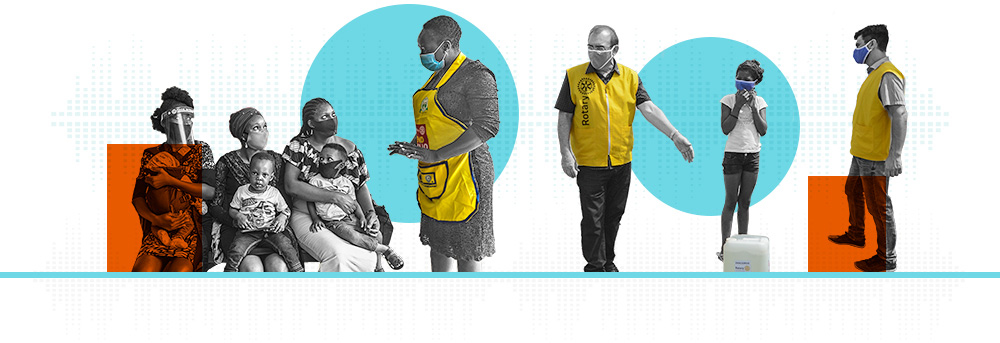
Lindsey Pointer facilitates a connection circle using a talking piece.
By Lindsey Pointer, Rotary Global Grant Scholar
During the recent U.S. government shut down, a bipartisan group of roughly two-dozen senators helped craft the funding deal to reopen the government. The group used a “talking stick” as a tool to facilitate their meeting, only allowing the senator with the stick to speak in an effort to cut down on interruptions.

Example of an Indigenous North American talking stick. First Nations Pedagogy Online
The use of the talking stick originated in Indigenous North American customs and is today also commonly used in restorative practices such as the circle, a process used to build connections and resolve disputes in community. Sometimes the talking stick is replaced by another object that has special significance to the group or facilitator using it. For example, I have heard a story of a group of construction workers having a difficult conversation about workplace safety using the hard hat of a deceased workmate as a talking piece to pass around in the circle.
Regardless of the object used, the talking piece ensures the equal voice and respectful communication necessary for cooperation.
The story about the senators got me thinking about other restorative principles and practices used by restorative justice organizations I have worked with. I have learned a few key strategies from working with these groups.
Lesson one
Always make time for relationships.
Every meeting with our whole staff begins with a connection circle in which each person answers a relationship-building question. Our staff takes turns facilitating those circles and picking the question and talking piece. The work always gets done, but plenty of time is made to laugh together, to check in about our lives, and offer support.
Above all else, restorative practices prioritize the building and maintaining of healthy relationships. We all have a want and a need to feel belonging and the only way to accomplish that is through opportunities for genuine connection. Research has shown that when we feel connected, heard, and appreciated at work, productivity increases. Having positive relationships with the people you work with also makes it easier to collaborate and compromise.
Lesson two
Establish a productive way to deal with conflict and remain open to feedback.
A Restorative conversation is a way of addressing one-on-one conflict that focuses on the impacts of an issue and what can be done to make things right moving forward. Longmont Community Justice Partnership trains volunteers in this method so they have a restorative way to resolves disputes among themselves over unreturned phone calls or differences in facilitation styles. Because staff members are all trained in the model, they have a tool for dealing with conflict and it doesn’t fester or come up again later passive aggressively.
Lesson three
Listen and show you are listening.
Active listening is a pillar of restorative practices. Facilitators are taught to show that they are listening through eye contact, body language, questions, and reflective statements. Active listening fuels cooperation.
Bringing the values, principles, and tools of restorative practices into our daily lives, families, and work communities allows us to create a social environment conducive to cooperation. Like the simple but powerful talking stick, these practices foster healthy community interactions.
Adapted with permission from the Peacebuilder Newsletter by District 5440
About the author: Lindsey Pointer is a restorative practices facilitator, trainer, and researcher. She is pursuing a Ph.D. in Restorative Justice at Victoria University in New Zealand with support from a Rotary Global Grant Scholarship and the Fulbright Program from the U.S. State Department.

i think the last one is the hardest lesson. We sometimes want to heard more than anybody else and it’s painful when you are the one at fault.
LikeLike
I’ve used this method many times. In spite of initial objections, it’s been very effective.
LikeLiked by 1 person